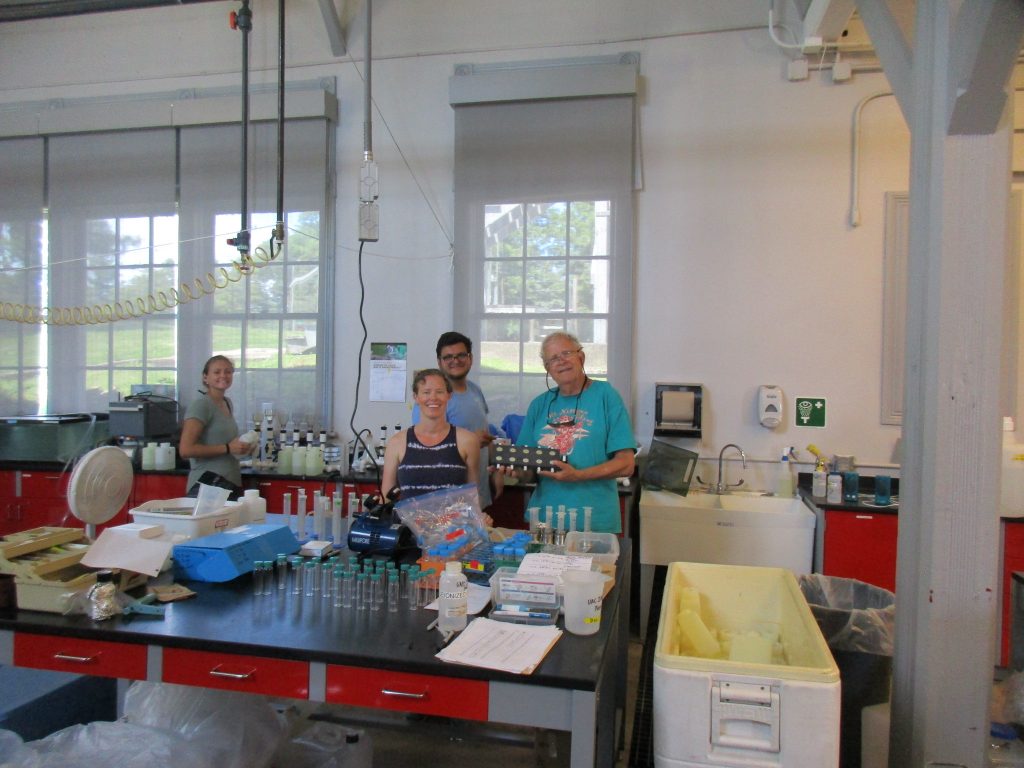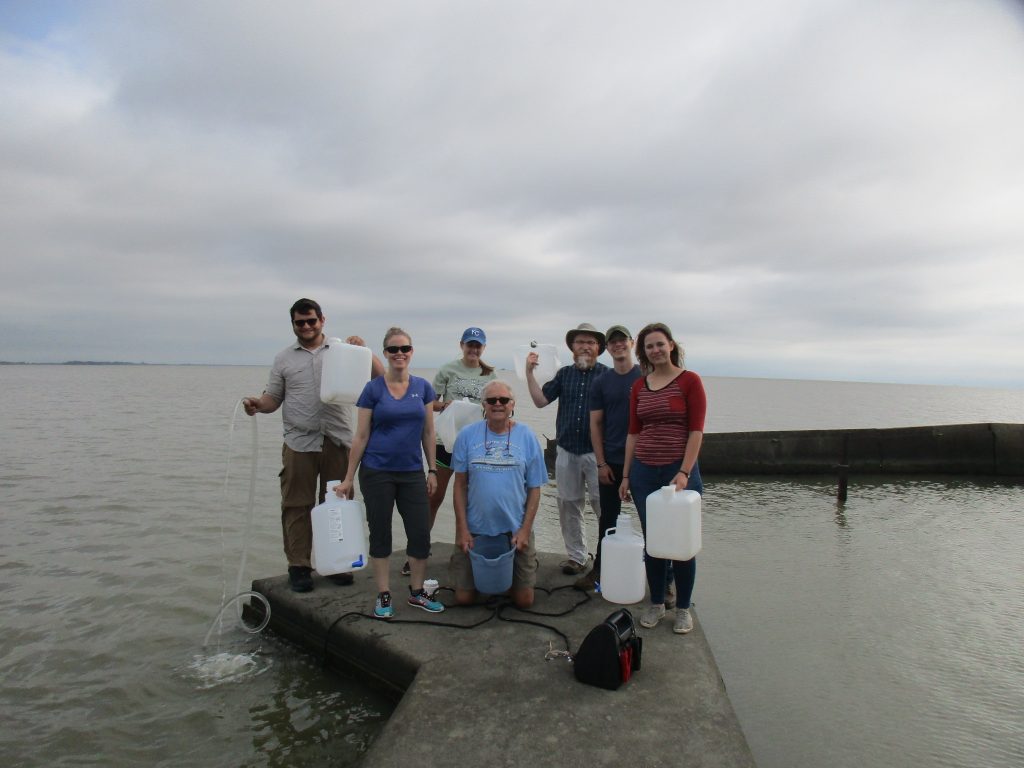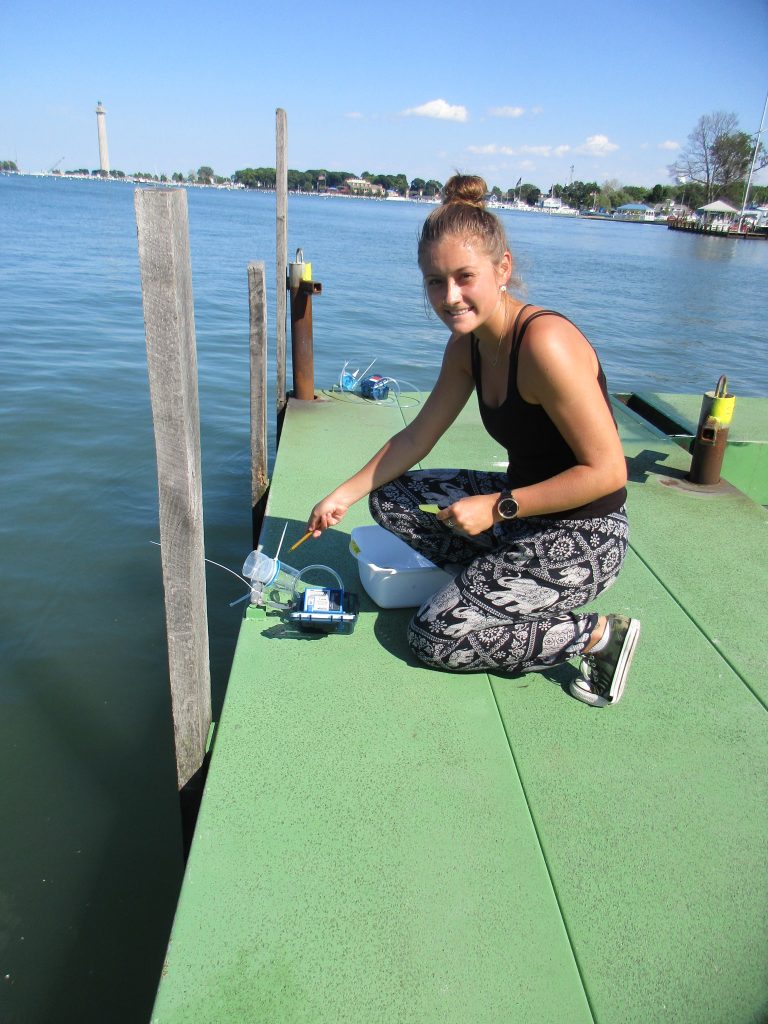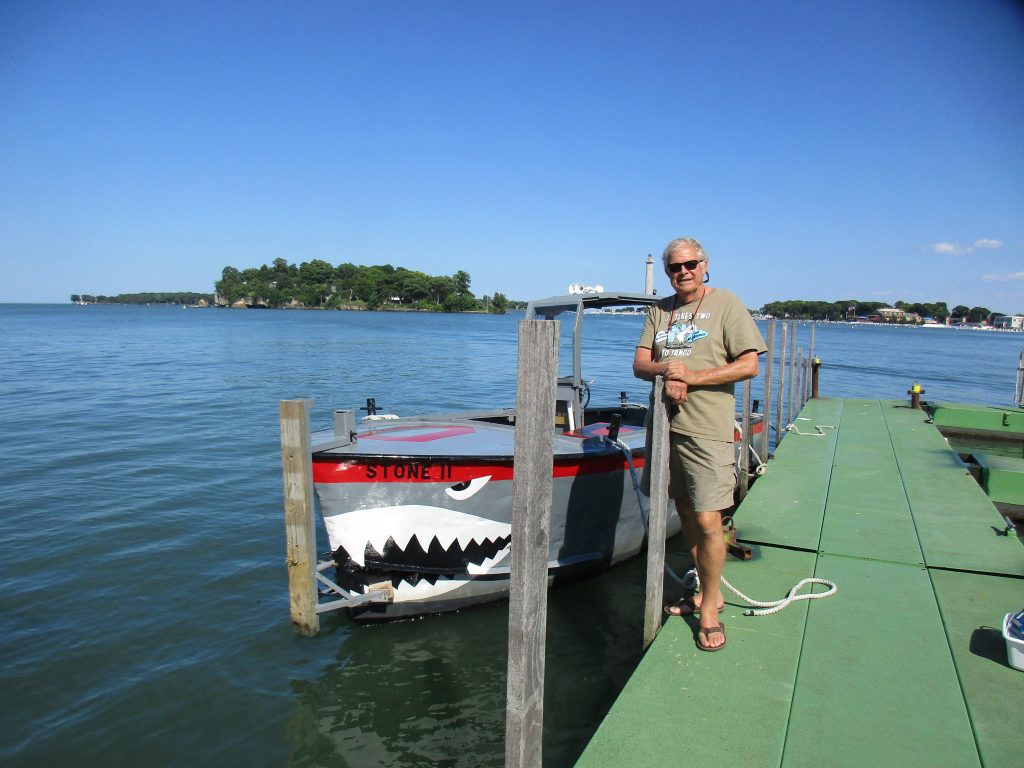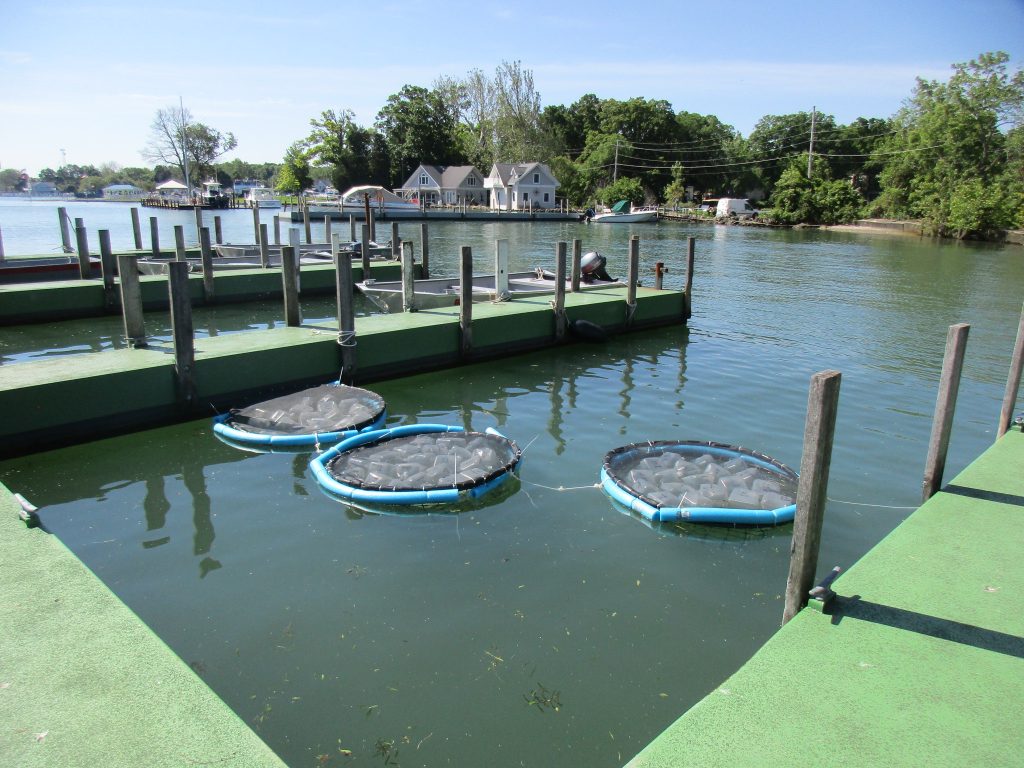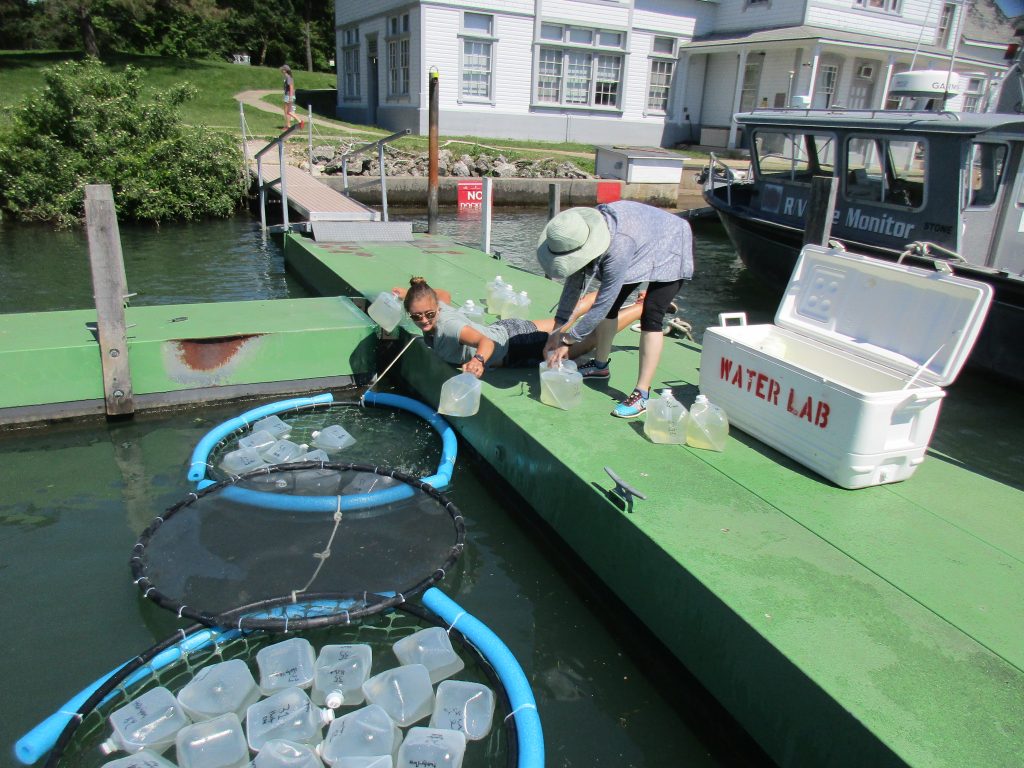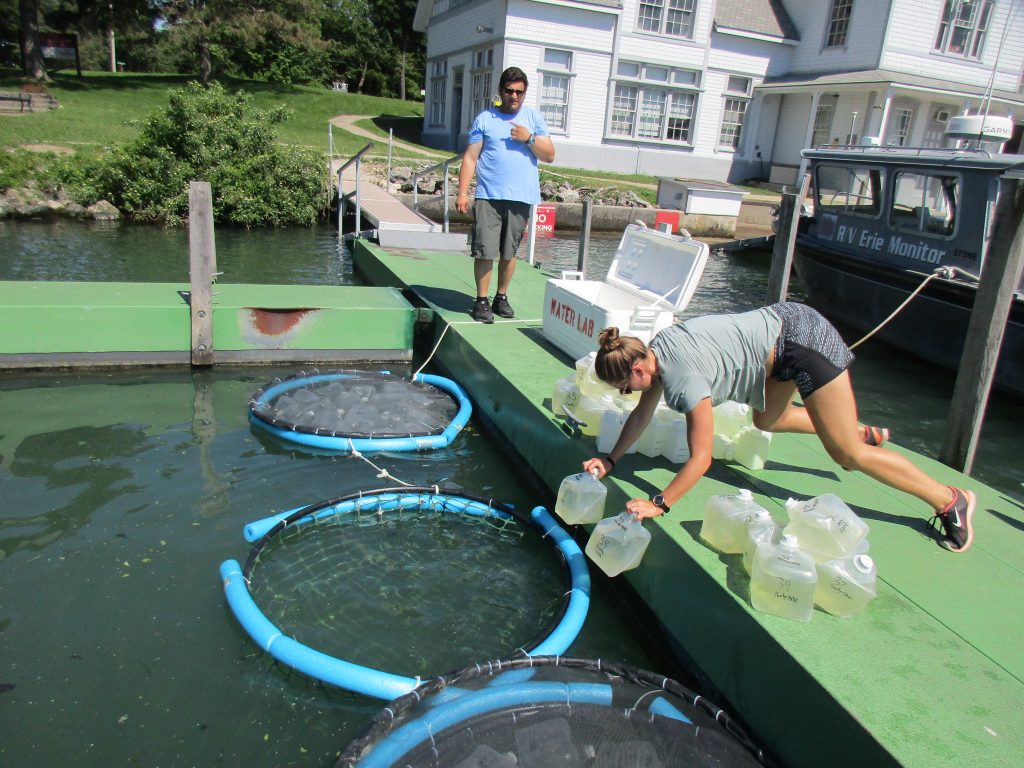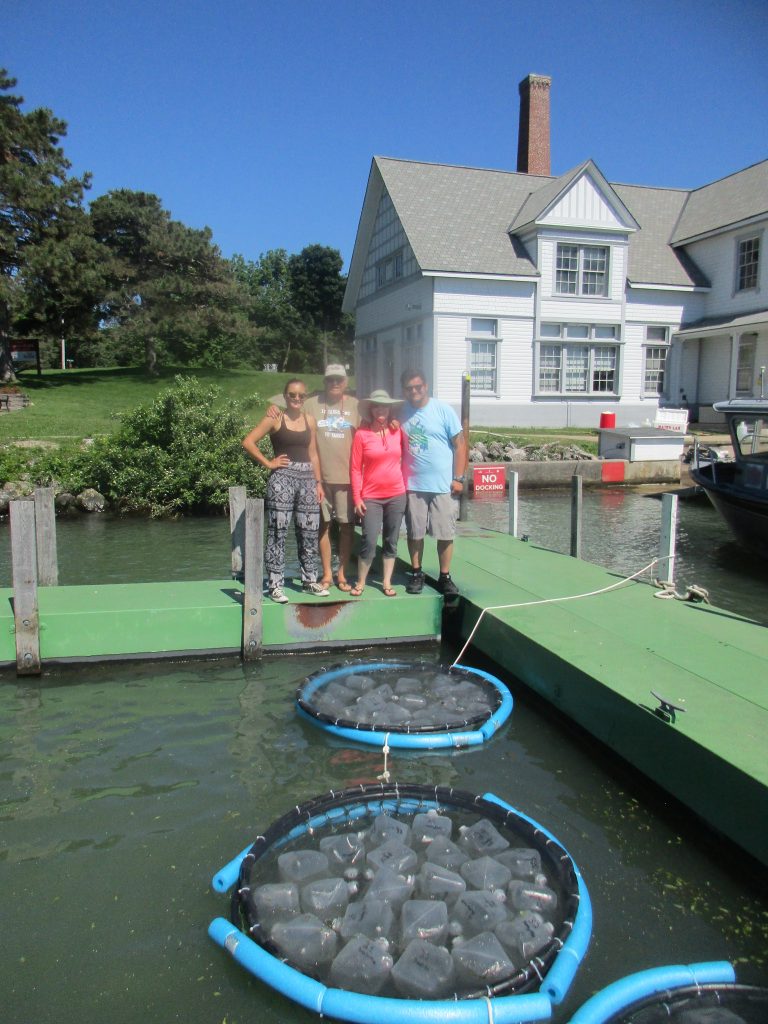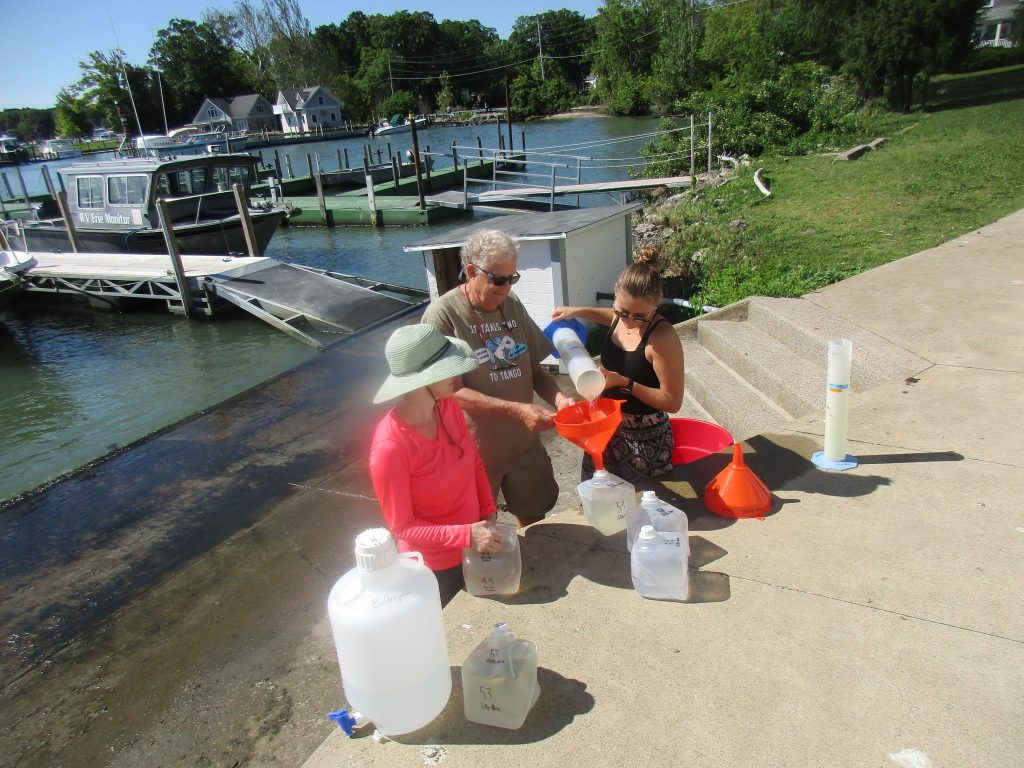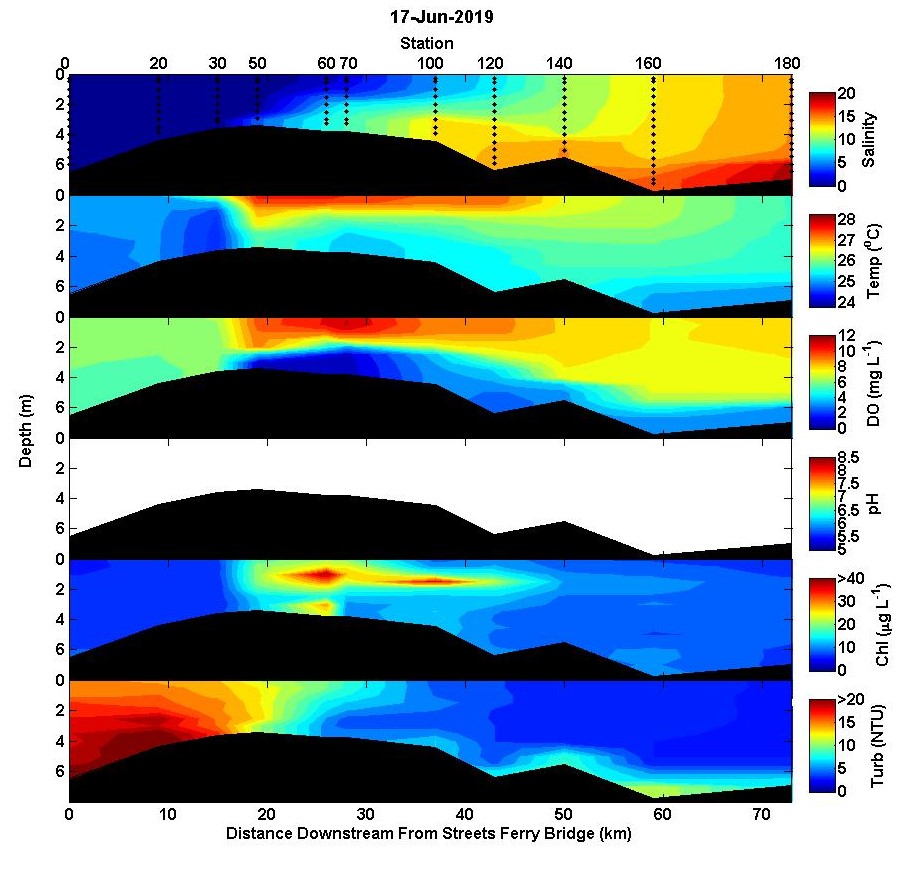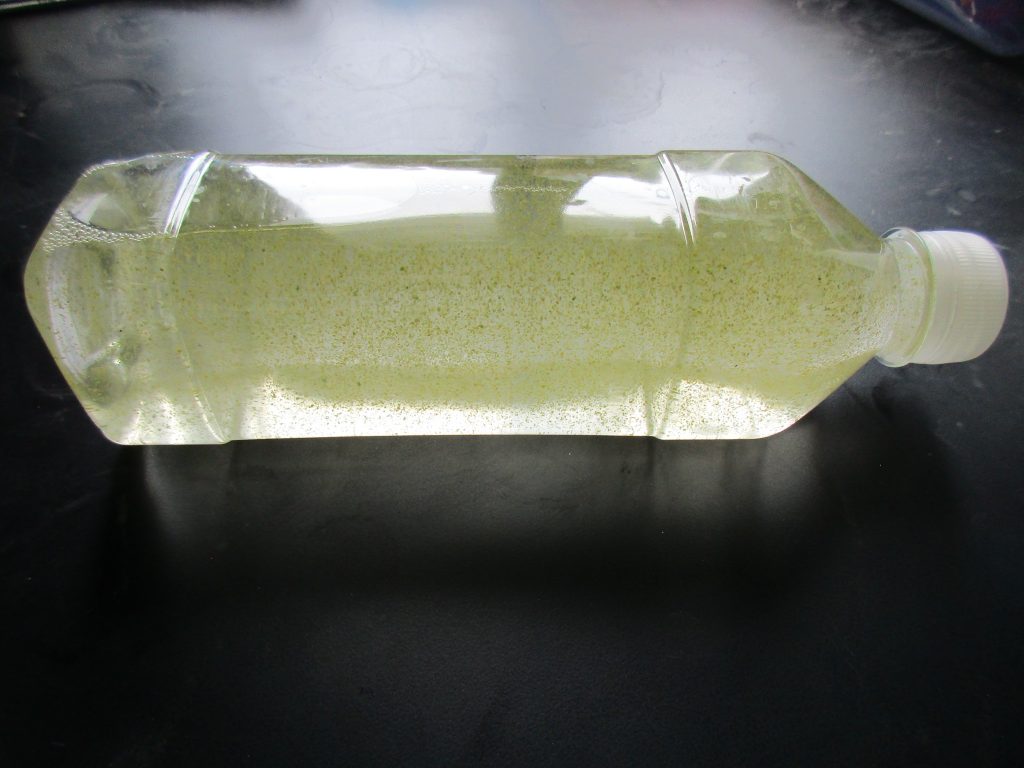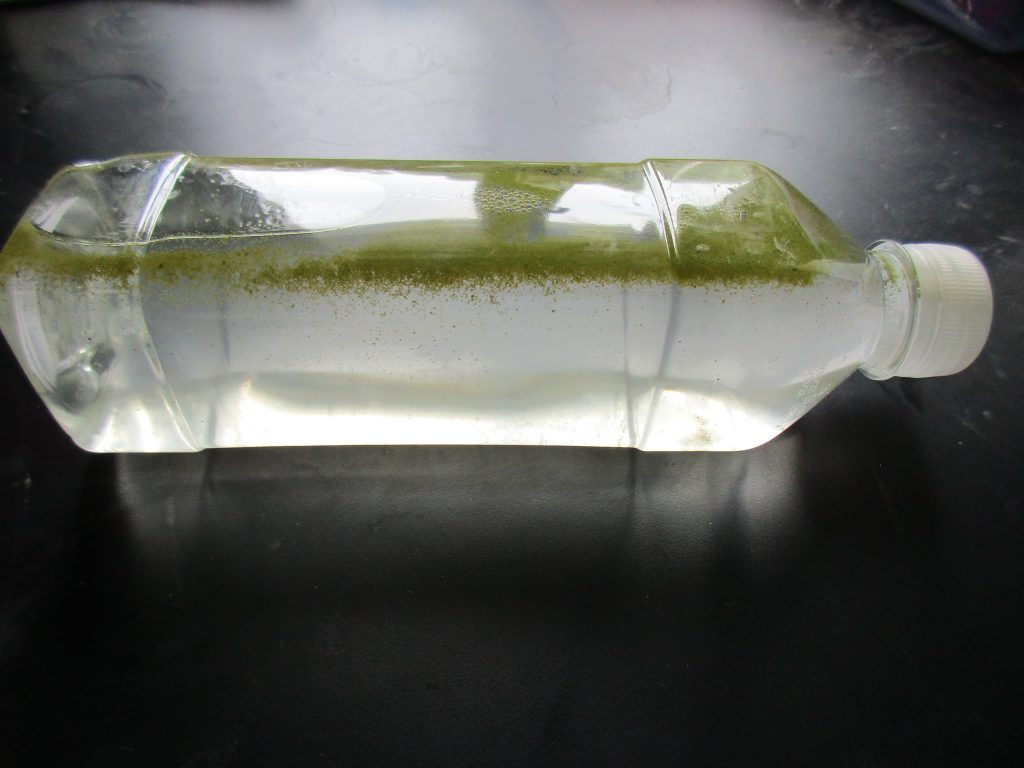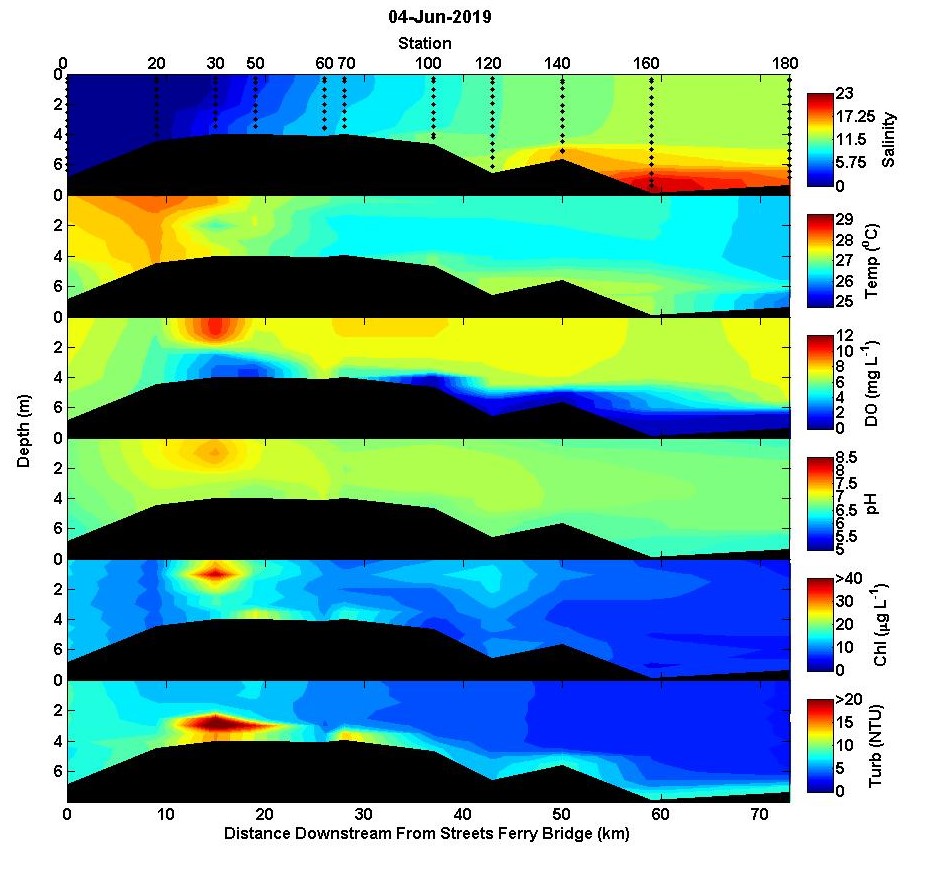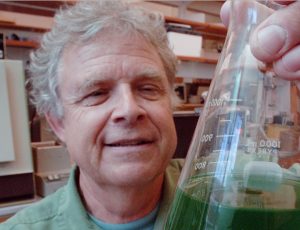Month: June 2019
Hi all,
Salinity in the lower estuary is average for this time of year but the upstream section is a little fresher than normal. The basin saw quite a bit of rain in the second week of June and river flows are about four times higher than the seasonal average. The salt wedge penetrated upstream to station 50 just downstream of the HWY 17 bridge. Bottom water dissolved oxygen was low from the tip of the salt wedge through the length of the estuary but was only below 2 mg/L (acutely lethal to fish) at stations 50-70. A subsurface peak in chlorophyll a at about 1 meter depth occurred from stations 60 -100. Microscopic examination of the surface water sample from station 60S revealed high concentrations of the dinoflagellate, Gyrodinium instriatum. This dinoflagellate is a common bloom former during the warmer months in the Neuse and is not known to produce toxins or negative food web related impacts. Photosynthesis produced a zone of supersaturated dissolved oxygen at the stations with high chlorophyll. pH data are not shown due to probe failure.
Best, Nathan
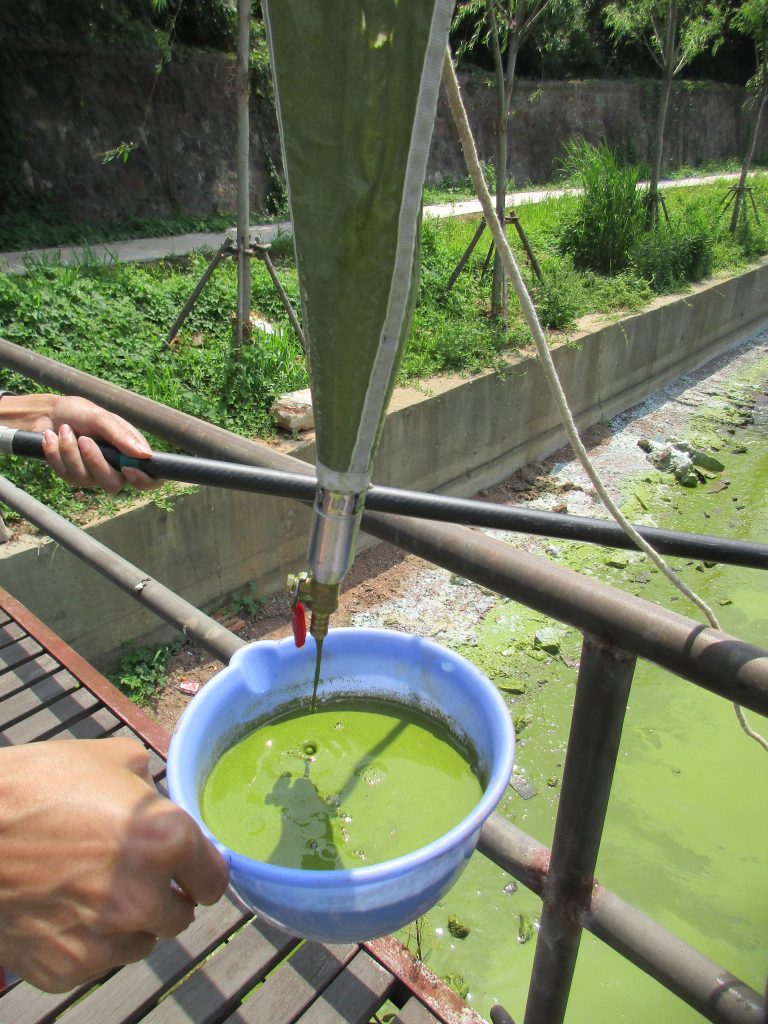
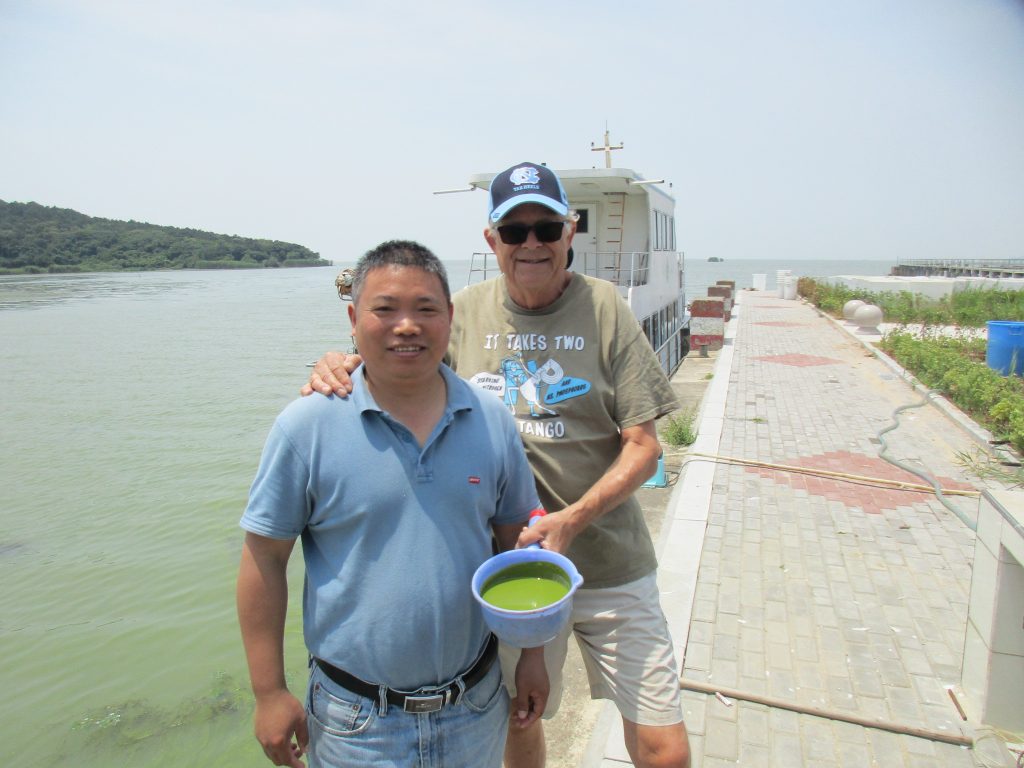 XuHai and Hans are cookin up some “cyano soup”.
XuHai and Hans are cookin up some “cyano soup”.
Collected Taihu stations today and was amazed at how buoyant the cyanos (mostly Microcystis) are right now. Within 30 seconds they went from a shaken suspended state to surface scum formation. Have a look.
Hey folks: Here’s some real bloom dynamics at Taihu. No photoshop stuff!! ☺
Within a week here the bloom has gone from bright green N sufficient to N limited, and last year we tested it with a 2- day nutrient addition bioassay, where we were able to make it N sufficient again by adding NO3. All the green Cubitainers received N.
Enjoy, Hans
Hi all,
For two and a half decades, ModMon has provided valuable information on water quality and habitat conditions in the Neuse River Estuary and Pamlico Sound. These data are crucial for evaluating how conditions are changing in response to human and climatic pressures. ModMon has also served as a platform to support research projects aimed at figuring out how estuaries work from ecological, geological, physical, and biogeochemical perspectives.
Conditions on 4 June 2019 were pretty typical for this time of year. Salinities ranged from zero above New Bern to a maximum of about 15 in the bottom waters near the mouth. Stratification was not particularly intense except at station 160 which was influenced by saltier bottom water likely from the Intracoastal Waterway. Hypoxic conditions occurred throughout most of the length of the estuary but were confined to a thin, ~1 m thick, layer near the bottom. A zone of high DO, high pH, and high chlorophyll a was observed at station 30 near New Bern. Microscopic examination of surface waters from station 30 revealed a high concentration of cryptophytes that are generally good food for higher trophic levels, and don’t cause problems.
Best,
Nathan
June commemorates the ModMon project, launching 25 years ago.
During the past two and a half decades, ModMon has supported over 80 publications and reports in premier, peer-reviewed journals and books. These publications have had major impacts on research, management and decision-making concerning North Carolinas estuaries.
